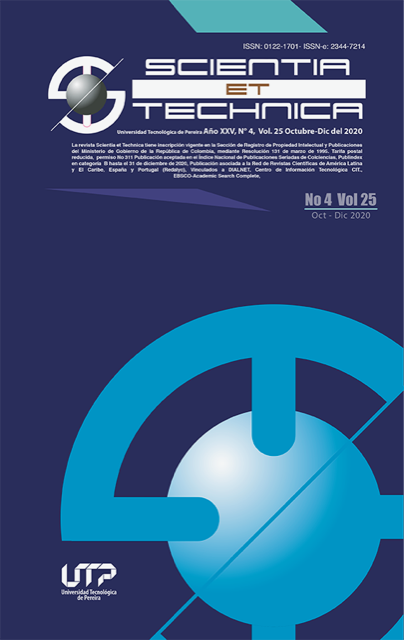Implementation of a cooling system to develop experimental fatigue tests below zero grades Celsius
Implementación de un sistema de enfriamiento para desarrollar pruebas de fatiga por debajo de cero grados Celsius
DOI:
https://doi.org/10.22517/23447214.23641Keywords:
Cooling system, Fatigue, Fracture, Low temperature, RefrigerationAbstract
Temperature is one of the matter properties with the greatest influence on the materials behavior existing in nature and those man designed. This physical magnitude allows to demonstrate and define behaviors and materials characteristics in the industry in general. Its influence is present in all the places where the materials fulfill functions, however, in some applications its influence is very little, which allows to disregard its effects. In the steels case (one of the most used materials at the industrial level today), the temperature variation produces dilation or contraction, depending on the temperature magnitude and its variation that affects them. Temperature increases generate an expansion phenomenon in the materials, which under load will reach a point where they present thermal fatigue failure. The opposite is that of temperature drops, where the phenomenon that occurs is contraction, often leading to the loss of adjustments and interference that compromise the equipment functionality and integrity. The fatigue failure mentioned is presented as a result of the stresses and deformations present in both cases. It is desired to condition a rotational flex fatigue test equipment with a cooling system to bring the sample material to temperatures below zero degrees Celsius, in order to check how low temperatures, affect the resistance of steel to fatigue. For this, a cooling system was designed and the fatigue equipment was adapted to reduce heat transfer. After carrying out this implementation and determining that the sizes of the devices were suitable for the proposed purposes, the initial temperature tests were carried out and, once this part was achieved, three repetitions of a rotary fatigue test were performed that demonstrated that the equipment can operate normally.
Downloads
Downloads
-
Vistas(Views): 354
- PDF Descargas(Downloads): 259
Published
How to Cite
Issue
Section
License
Copyrights
The journal is free open access. The papers are published under the Creative Commons Attribution / Attribution-NonCommercial-NoDerivatives 4.0 International - CC BY-NC-ND 4.0 license. For this reason, the author or authors of a manuscript accepted for publication will yield all the economic rights to the Universidad Tecnológica of Pereira free of charge, taking into account the following:
In the event that the submitted manuscript is accepted for publication, the authors must grant permission to the journal, in unlimited time, to reproduce, to edit, distribute, exhibit and publish anywhere, either by means printed, electronic, databases, repositories, optical discs, Internet or any other required medium. In all cases, the journal preserves the obligation to respect, the moral rights of the authors, contained in article 30 of Law 23 of 1982 of the Government Colombian.
The transferors using ASSIGNMENT OF PATRIMONIAL RIGHTS letter declare that all the material that is part of the article is entirely free of copyright. Therefore, the authors are responsible for any litigation or related claim to intellectual property rights. They exonerate of all responsibility to the Universidad Tecnológica of Pereira (publishing entity) and the Scientia et Technica journal. Likewise, the authors accept that the work presented will be distributed in free open access, safeguarding copyright under the Creative Commons Attribution / Recognition-NonCommercial-NoDerivatives 4.0 International - https://creativecommons.org/licenses/by-nc-nd/4.0/deed.es license.



